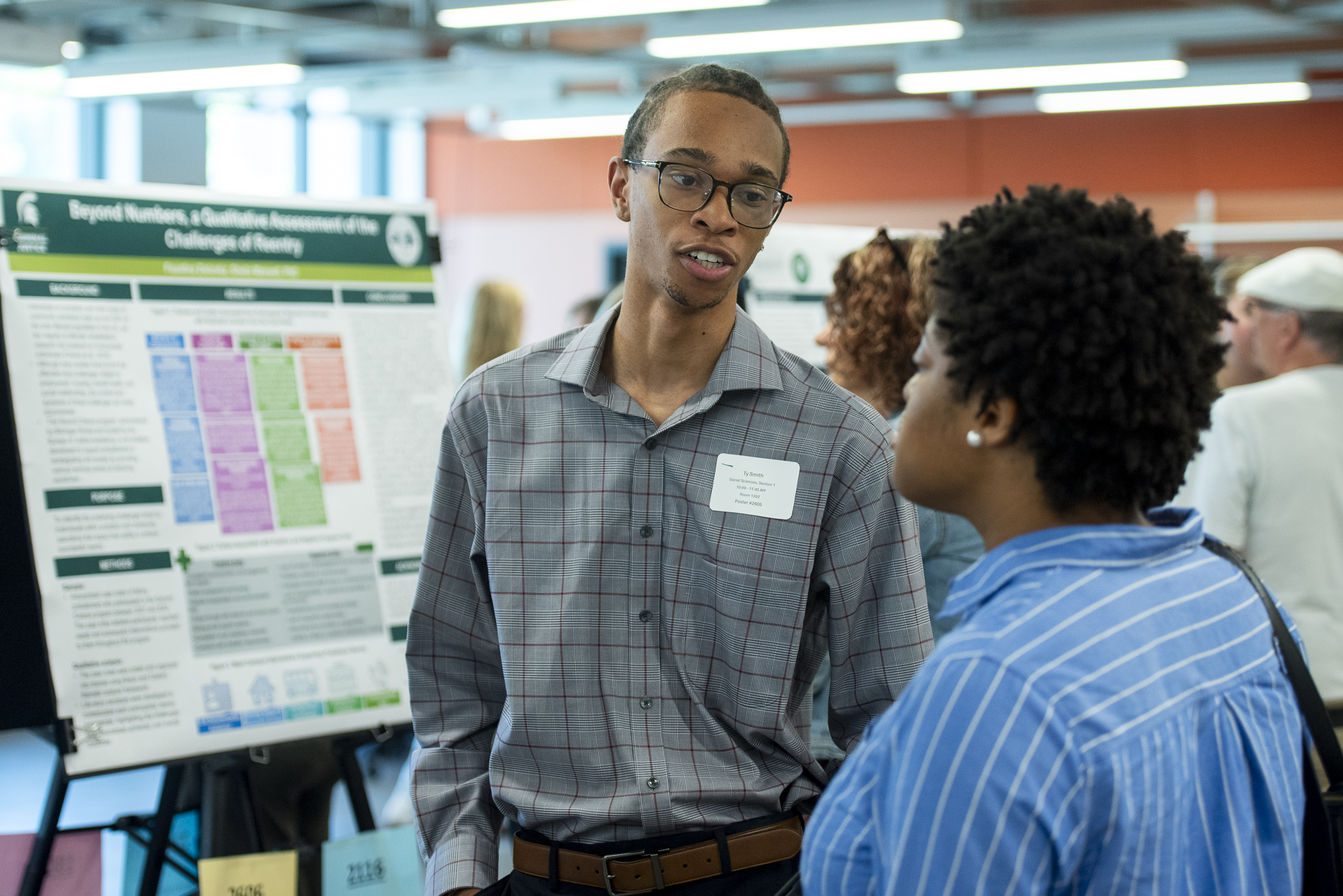Research Spotlight: IDS Major Tyler Smith
September 11, 2025 - Kelly Smith
 Interdisciplinary Studies major Tyler (Ty) Smith was awarded a Provost’s Undergraduate Research Initiative (PURI) Award to help fund his research about street food in India. Here Ty talks about his five weeks studying and researching abroad, the documentary he collaborated on, and offers advice to new MSU students.
Interdisciplinary Studies major Tyler (Ty) Smith was awarded a Provost’s Undergraduate Research Initiative (PURI) Award to help fund his research about street food in India. Here Ty talks about his five weeks studying and researching abroad, the documentary he collaborated on, and offers advice to new MSU students. Why did you decide to study street food in India?
I originally did a project on food accessibility in the Lansing area. My professor, Dr. Eddie Boucher, liked the research and told me about an opportunity to take it further by going to India. My original plan was to do a comparison between food accessibility in Michigan versus India. But once I got there, I decided to change my topic to a specific street food called momo (a type of dumpling). I saw how many people were gathered around the food stalls that sell momo, and I wanted to understand why. I found that momo was often the cheapest dish on the menu (about 10 rupees), so my study focused on accessibility and how people eat, regardless of their socioeconomic background.
How did you prepare for the interviews in the film?
I prepared by creating different sets of questions for different groups, like the chefs, street vendors, and customers. At first, my questions were really momo-specific: “How do you feel about momo?” “What emotions do you associate with eating it?” “Does it help you eat more affordably?” But after a few interviews, I realized people weren’t that emotionally connected to momo itself. That led me to explore how the dish became part of Indian street food culture, and how it was adapted with Indian spices and became more than just a cheap snack. I started asking about flavors, locations, and cultural connections, and that helped people open up more.
It sounds like your focus shifted a bit during the project. Were there any other challenges you faced during the interviews or research?
One big challenge was the language barrier. Also, being an American tourist with a camera made some people feel intimidated. They weren’t sure what I was going to ask or where the footage would end up.
Were people more willing to talk to you once they understood the project better?
Yes! Once we came up with a clearer script and elevator pitch for the project, people felt more comfortable. My teammate from India was fluent in Hindi and helped explain the project to street vendors. That made a big difference. People felt more at ease and understood they could answer only what they were comfortable with.
Was there anything that surprised you during the research and interviews?
What surprised me most was how enthusiastic people were about Indian food. Almost everyone we interviewed wanted to schedule time for us to come eat with them later! They’d talk about their favorite dishes, invite us to their homes, and introduce us to their families. They were curious about our culture and eager to share theirs.
Did you have any favorite classes at MSU?
Any class taught by Dr. Boucher was my favorite. He gave us the freedom to be creative... schedule interviews, do data research on our own time. It felt like I was studying something I was really interested in, with guidance and support from him. Some days were structured, and others were more flexible, which I appreciated. I did multiple interviews for my project, and it all came full circle when some of the people I interviewed came to view my poster (at MidSURE) and congratulated me. That’s what I loved most: doing something meaningful for the community and myself.
Do you have any tips for new MSU students?
Yes! Especially for students studying social science — be yourself and stay authentic. Don’t just do things because you feel like you have to. Spend time getting to know yourself during your first semester. Explore as many clubs and options as possible and talk to lots of people. Time flies, and you’ll want to make the most of it. Take your time to explore and find what fits you. The best part of a big school is there’s a place for everyone.
Ty spent five weeks in Jaipur, India, researching how a particular food (in this case, a type of dumpling called a momo) transforms from one culture to another. Watch his full documentary research project here: https://www.youtube.com/watch?v=VcdF2I2htD8

